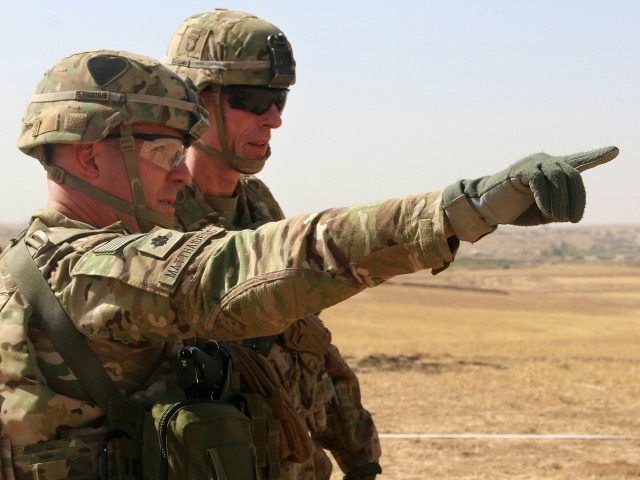WASHINGTON – A U.S. plan to help Syrian allies retake Raqqa, the Islamic State’s stronghold in Syria, could involve more U.S. troops getting significantly closer to the fight.
The Pentagon’s “favored option” among several options forwarded to the White House last week includes increasing the use of Special Operations forces, attack helicopters and artillery, arming Syrian Kurdish and Arab forces on the ground, and easing restrictions on U.S. troops, according to the Washington Post.
U.S. military officials involved in the planning have proposed lifting a cap of 503 U.S. troops officially authorized to deploy to Syria.
Pentagon officials have not publicly discussed how many U.S. troops are deployed as part of the 503 cap but say it is below that. That cap does not include U.S. troops who come in and out of the country on a temporary basis.
Under the Pentagon’s plan, U.S. troops would not be directly involved in ground combat but would work closer to the front lines to assist the Syrian Democratic Forces in retaking Raqqa.
While American troops would not participate in ground combat, the proposal would grant them more freedom to navigate front line and delegate more decision-making authority down the military line from Washington, according to the report.
The plans were forwarded to the White House last Monday, after President Trump gave the Pentagon 30 days to prepare a plan to destroy ISIS.
In the meantime, U.S. commanders have began a new mission in Syria’s north — preventing a new fight between two U.S. allies — Turkish government forces and the Syrian Democratic Forces.
A Pentagon spokesman on Tuesday said some detachments of U.S. troops are “visibly stationed” in the northern Syrian city of Manbij, to remind the Turkish and Kurdish forces — who are both fighting ISIS but view each other as enemies — not to begin fighting.
Turkey believes the SDF is part of the Kurdish militant group PKK that has been advocating for autonomy in Turkey and is suspected of terrorist attacks there. The country intervened in the Syrian civil war when it appeared that Kurdish forces were gaining ground in Syria along Turkey’s border.
The Pentagon describes the new mission as a “reassure and deter” mission.
“We have made visible actions in deploying U.S. forces as part of the coalition in and around Manbij to reassure and deter. And that’s to deter parties from attacking any other parties other than ISIS itself,” said Navy Capt. Jeff Davis.
Davis said the SDF, who originally worked with the U.S. to push ISIS out of Manbij, have given the terrain to its Arab elements, dubbed the Manbij Military Council.
“The goal here is to make sure there is no misunderstanding about who is holding Manbij. Manbij is being held by the Manbij Military Council — a predominantly Arab force,” he said.

COMMENTS
Please let us know if you're having issues with commenting.